Blue Badge Tourist Guides on a tour of London will probably go through Trafalgar Square in the centre of the city. One of its most striking features is the sculpture on display on the northwest side of the Square. Known simply as ‘The Fourth Plinth,’ it remained empty until 1999. It was consistently rumoured that a statue of the late Queen Elizabeth II was planned for this space but she had a very long life and died at the age of 96 in 2022.
The television personality and chef Prue Leith wrote to the Evening Standard in 1994 suggesting that something should be done about this empty space. Leith is a well-known food writer and has taken over as the presenter of popular Great British Bake Off television show. She was then chair of the Royal Society of Arts and her letter led to a commission being established under the distinguished writer and lawyer the late John Mortimer to find a use for London’s most famous empty space. They decided that a series of artworks would be installed, each one remaining there for a couple of years until it was replaced by another.
A committee consisting of major figures in the art world such as curators, journalists and artists was set up by the Mayor of London to assess contenders for the much sought after exposure that would come from display in such a prominent position. Artists who want to be considered for inclusion on the Fourth Plinth are asked to send in a maquette (a small-scale model) of their proposed work, and the final decision is made by the elected Mayor of London after public consultations. London’s mayor is currently Sadiq Khan, who is on his third term of office and is the first Muslim to be elected mayor of a major city in Europe. The artist himself or herself is paid £30,000 plus up to £140,000 to cover the cost of installation.
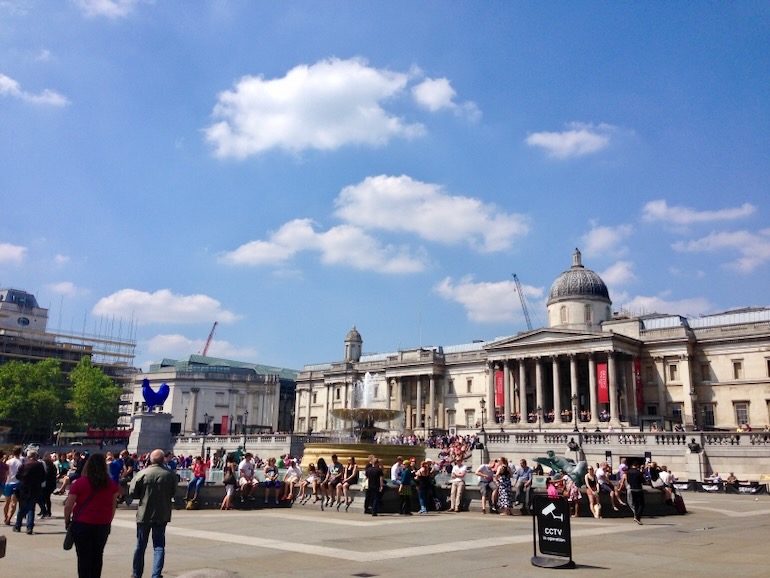 Blue Domestic Cockerel, aka Rooster on Fourth Plinth in Trafalgar Square. Photo Credit: © Ursula Petula Barzey.
Blue Domestic Cockerel, aka Rooster on Fourth Plinth in Trafalgar Square. Photo Credit: © Ursula Petula Barzey.
The original intention was that a statue of King William IV would stand on the plinth, but a lack of funds meant it was never completed and the ‘sailor king’ statue now stands in Greenwich, an area associated with his work as a sea admiral. William’s brother and predecessor George IV, has an equestrian statue on the north-eastern side of the square. Their father, King George III, is also remembered with a statue behind Canada House. In 1837, William was succeeded by his niece who became Queen Victoria. She ascended to the throne at the age of eighteen and had the longest reign of any British monarch until her record of sixty-three years was overtaken by Queen Elizabeth II. Although she is not commemorated in Trafalgar Square, there are many statues of Queen Victoria in London and throughout the world, most prominently in front of Buckingham Palace.
In September 2024 a new sculpture was unveiled on the Fourth Plinth. It is called 850 Impromptas by the Mexican artist Teresa Margolles and is a representation of trans people from London and around the world in the form of a trompanti or skull rack. It will be succeeded in 2026 by Lady In Blue a statue of a young woman of colour by the American artist Tschabalala Self. Two years later it will be followed by a hollow shrouded equestrian statue by Andra Ursuta. Called simply Untitled, it will show a horse and rider made from lapis lazuli which is intended to show the plinth ‘both occupied and empty’. Artworks chosen for the Fourth Plinth are expected to make a political statement on an issue of significance.
The last statue to occupy the space was called Antelope by the artist Samson Kambalu and contains a representation of the Baptist preacher and pan-Africanist John Chilembwe wearing a hat, which was illegal for native Africans at the time, together with a smaller statue of the Baptist missionary John Chorley. Chilembwe is considered a hero by Malawians for defying the racist laws of the day and leading a rebellion against colonial rule. This cost him his life in 1915, but he is remembered on John Chilembwe Day, the 15th of January.
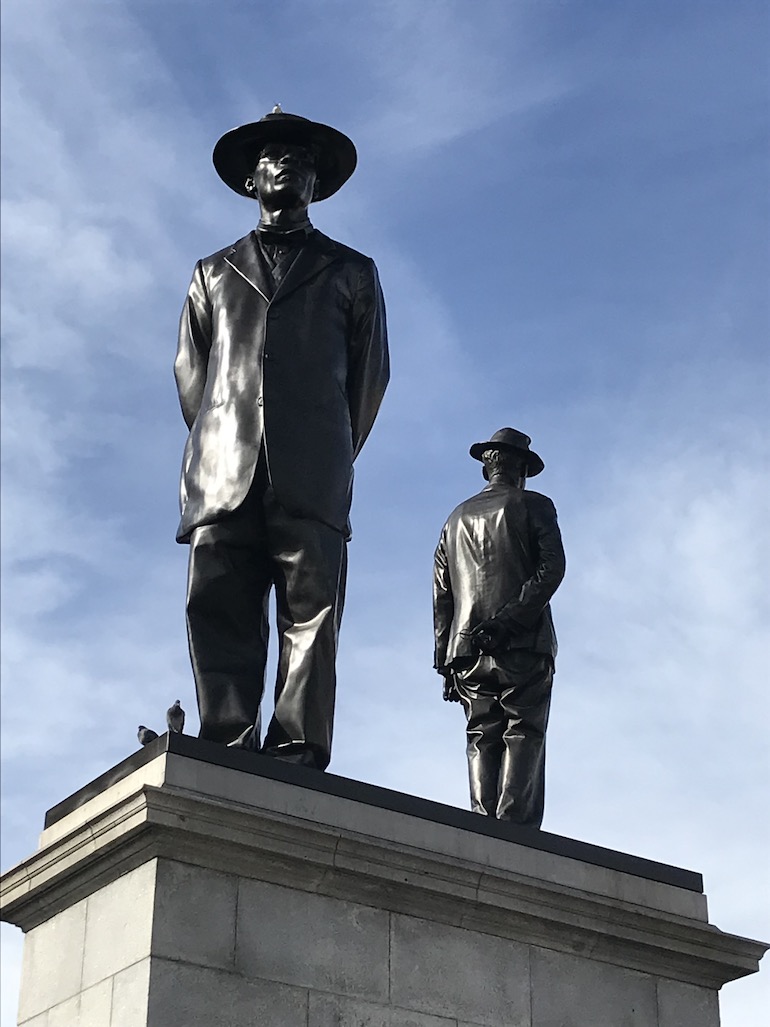 Fourth Plinth in Trafalgar Square: Antelope by Samson Kambalu. Photo Credit: © Edwin Lerner.
Fourth Plinth in Trafalgar Square: Antelope by Samson Kambalu. Photo Credit: © Edwin Lerner.
Kambalu’s statue of Chilembwe replaced a sculpture by the Turner-nominated artist and poet Heather Phillipson called The End. This showed a representation of a dollop of whipped cream with a cherry on top, a fly and a drone which films passers-by and displays them on a nearby screen. Deliberately unsettling and open to a variety of interpretations, The End represented both exuberance and unease and was certainly an arresting and interesting image that attracted almost as much attention as the nearby Nelson’s Column.
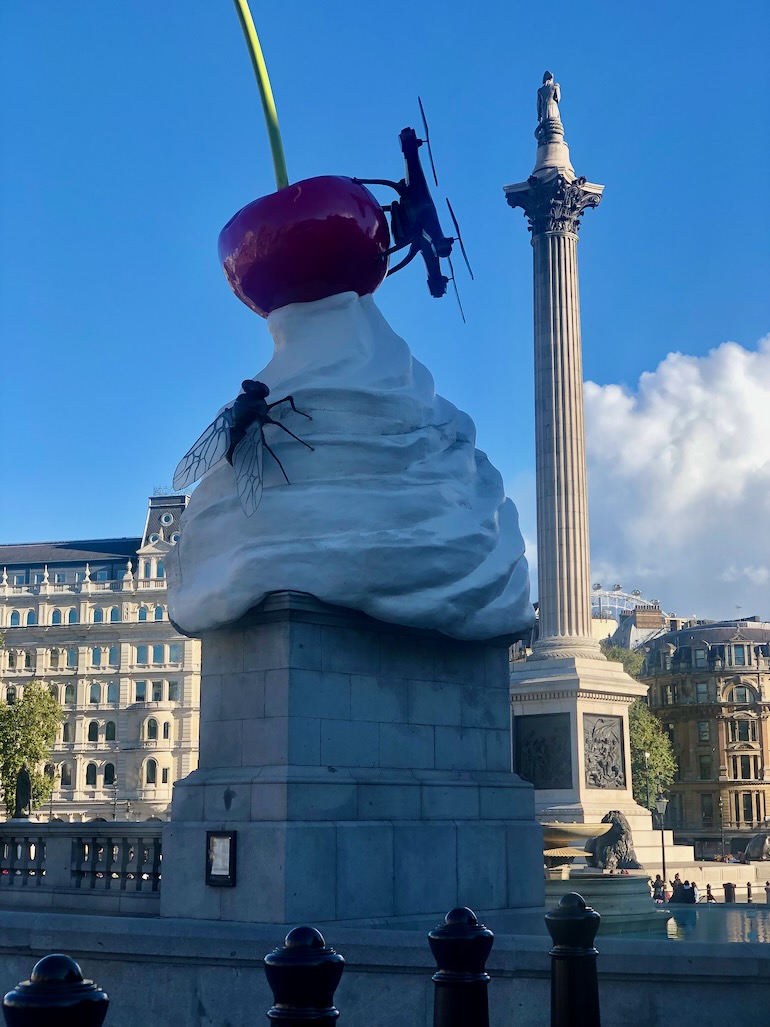 Fourth Plinth in Trafalgar Square: The End by Heather Phillipson. Photo Credit: © Ursula Petula Barzey.
Fourth Plinth in Trafalgar Square: The End by Heather Phillipson. Photo Credit: © Ursula Petula Barzey.
The End was preceded by The Invisible Enemy Should Not Exist, a sculpture by the American-Iraqi artist Michael Rakowitz which occupied the space between 2018 and 2020. This is a representation of the winged deity Lamassu which stood at the Nergal Gate of the ancient Assyrian city of Nineveh, near to modern-day Mosul. It is made from 10,500 cans which previously held date syrup, an important product of an Iraqi industry devastated by the recent warfare. The original sculpture was destroyed by ISIS in 2015 and Rakowitz’s work is intended to encourage a symbolic rebirth of the city. It is one part of a project aimed at recreating the estimated seven thousand artworks destroyed in Iraq in recent years, either deliberately by ISIS or as a by-product of the war started by the American invasion of 2003.
Other artworks featured in Trafalgar Square include Monument, an upside-down Perspex model of the plinth itself by the artist Rachel Whiteread, who specialises in using plastic materials to represent empty spaces. Few people who saw it will forget the sculpture Cock by Katharina Fritsch, a bright blue cockerel which symbolises ‘regeneration, awakening and strength’. Ecce Homo by Mark Wallinger was a representation of Christ wearing only a loincloth and crown made of barbed wire instead of thorns. London guides will also remember Anthony Gormley’s One and Other which showed a variety of people occupying the plinth for an hour, one of them a guide taking calls and arranging tours on her mobile.
Details and photographs of all the previous works of art on the Fourth Plinth can be seen on the Mayor of London’s Fourth Plinth Programme website.
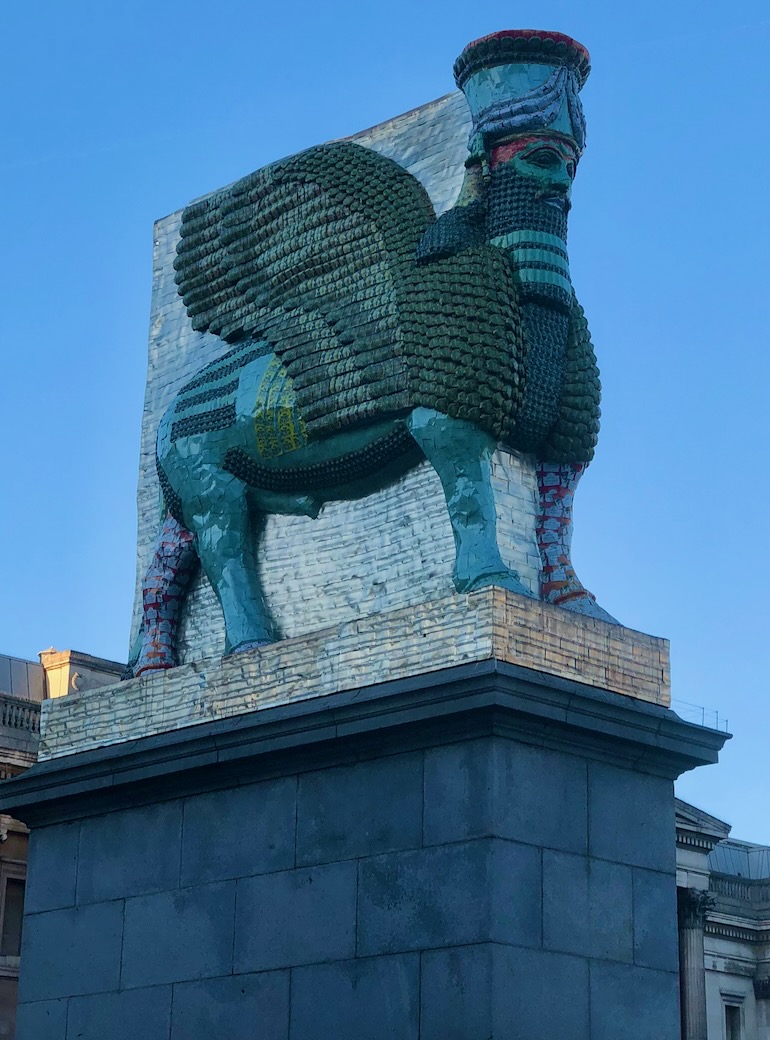 Fourth Plinth in Trafalgar Square: The Invisible Enemy Should Not Exist by Michael Rakowitz. Photo Credit: © Ursula Petula Barzey.
Fourth Plinth in Trafalgar Square: The Invisible Enemy Should Not Exist by Michael Rakowitz. Photo Credit: © Ursula Petula Barzey.
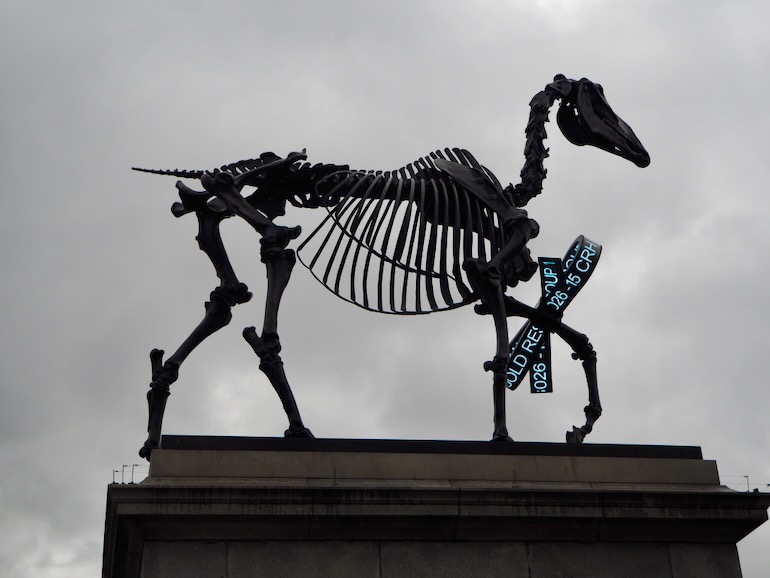 Fourth Plinth in Trafalgar Square_Gift Horse by Hans Haack. Photo Credit: © Ursula Petula Barzey.
Fourth Plinth in Trafalgar Square_Gift Horse by Hans Haack. Photo Credit: © Ursula Petula Barzey.
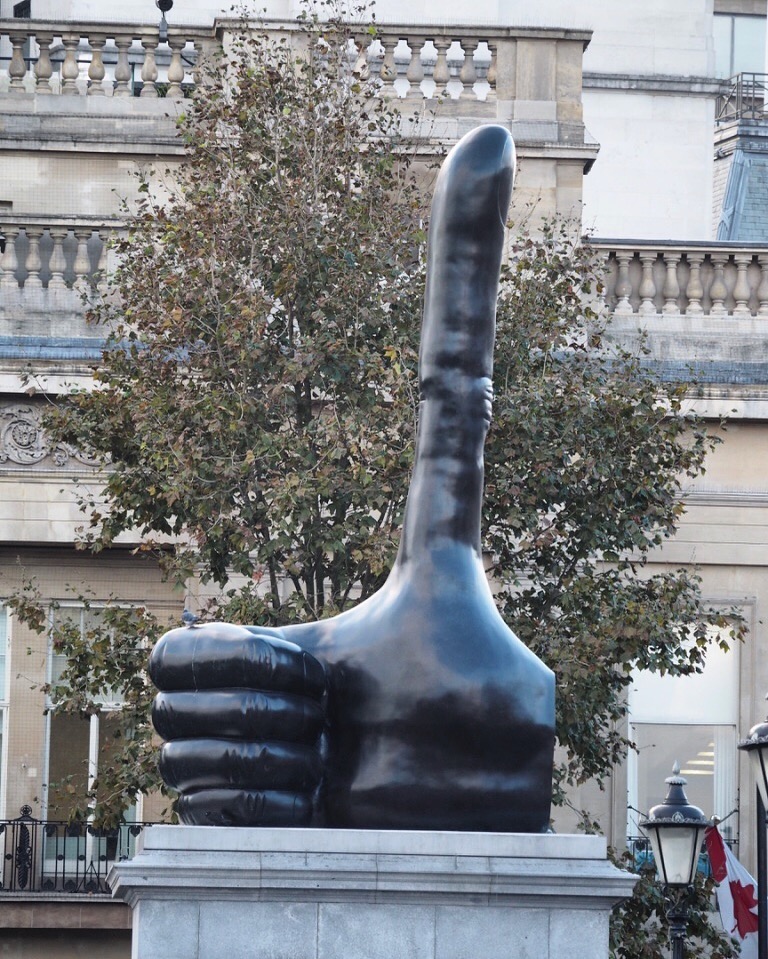 Fourth Plinth in Trafalgar Square: Really Good by David Shrigley. Photo Credit: © Ursula Petula Barzey.
Fourth Plinth in Trafalgar Square: Really Good by David Shrigley. Photo Credit: © Ursula Petula Barzey.



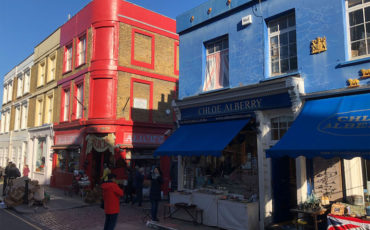
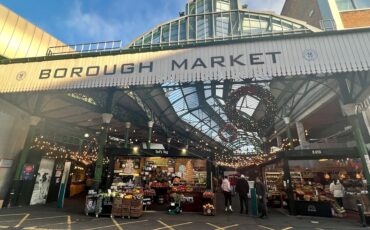


Leave a Reply